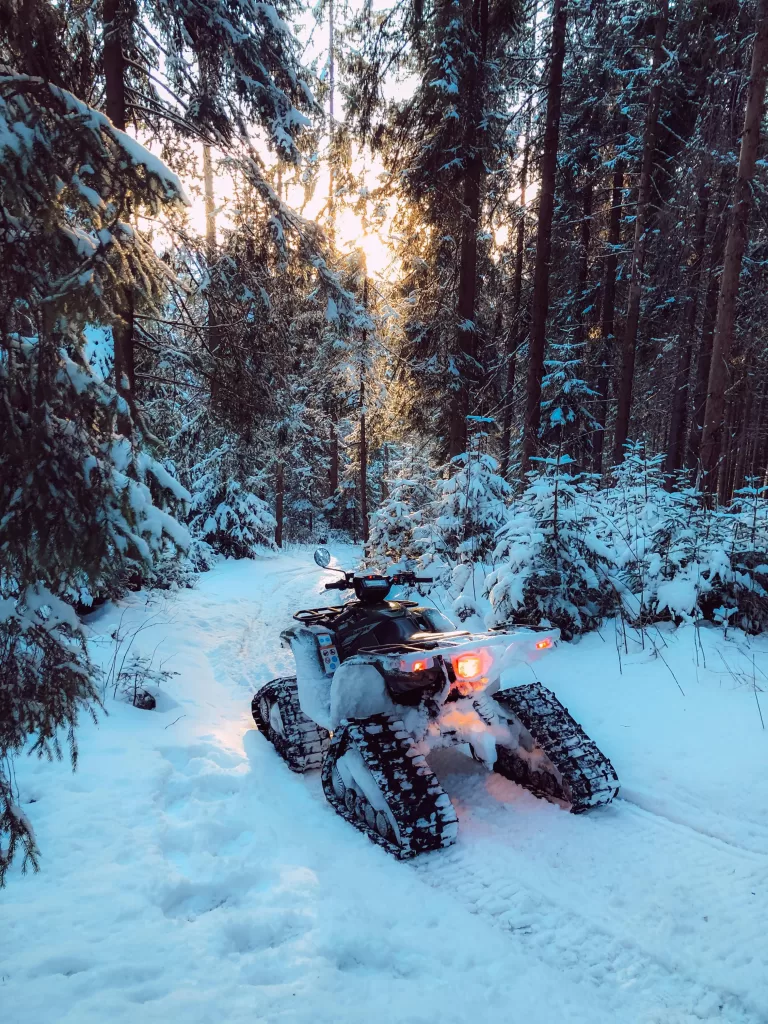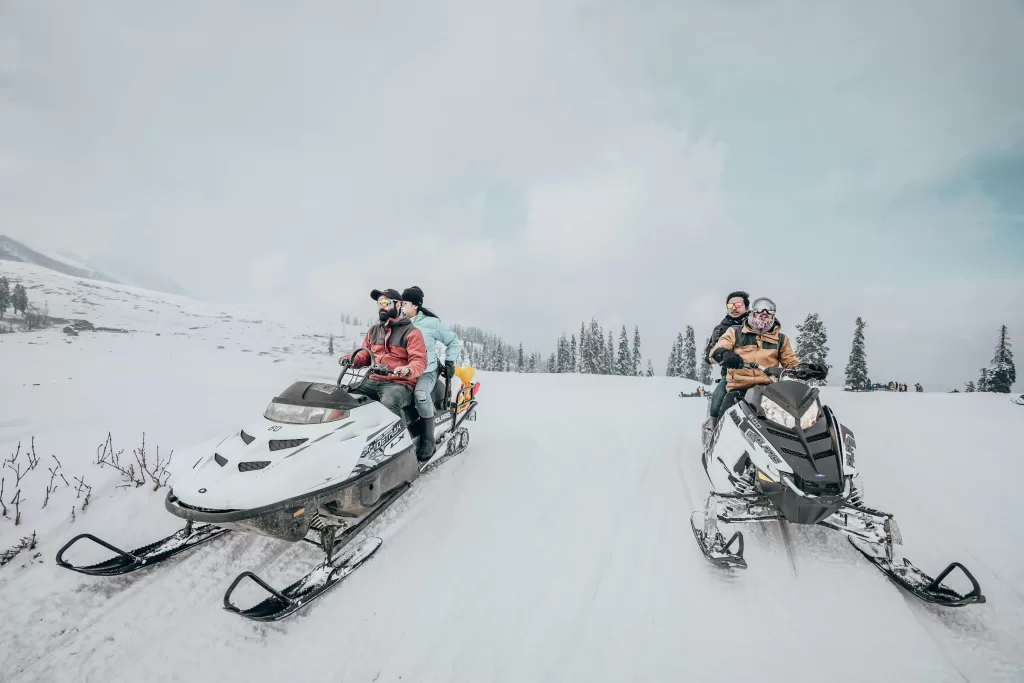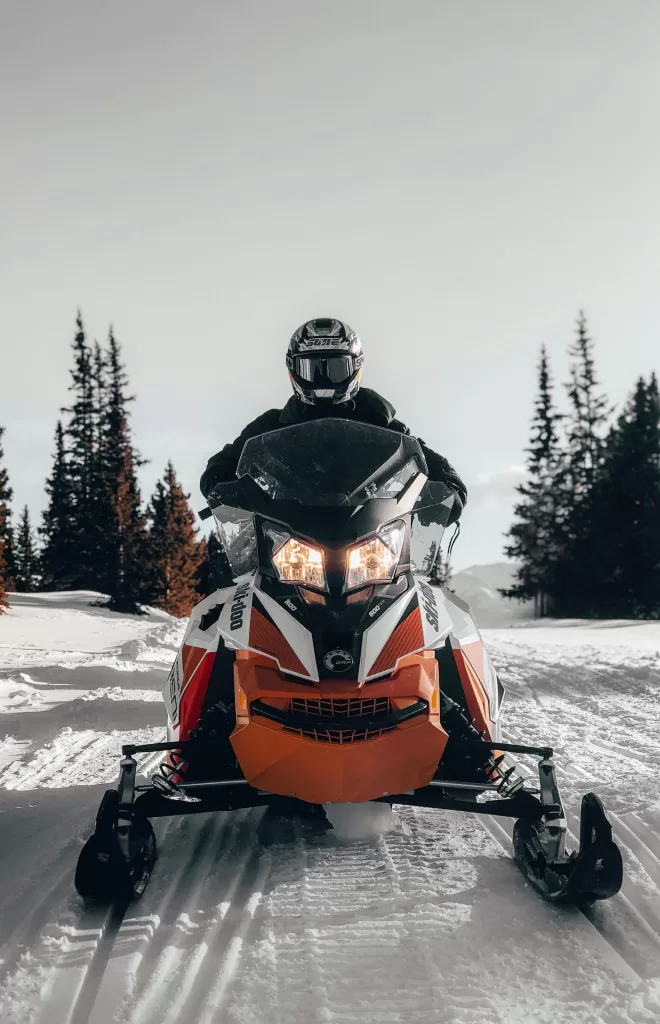For outdoor enthusiasts, few activities can compare to the thrill of riding a snowmobile through a fresh powder. Zooming across snow-covered hills, forests, and trails on a brisk winter day fills you with adrenaline and childlike joy. However, handling these powerful machines takes skill and practice so beginners should properly equip themselves with safety gear and basic techniques before attempting to ride.
Snowmobiling opens up remote winter wonderlands that would normally be inaccessible without this specialized vehicle. Despite the challenge involved with operating a snowmobile, the unparalleled adventures you can experience make it well worth learning. Whether you’ve already bought a new vehicle or are shopping new polaris snowmobiles for sale, take a look at the following information.
This beginner’s guide covers all the main areas, from safety precautions to balancing techniques, throttle control, turning methods, and more. With the right foundation, even novices can safely enjoy the magic of trail riding, hill climbing, or open area zooming on a snowmobile.

Riding a Snowmobile: The Ultimate Beginner’s Guide
Safety First
The first thing any beginner snowmobiler should learn is how to ride safely. Always wear a helmet, thick gloves, snow pants, boots, and goggles or a face shield to protect from wind, snow, and UV rays. Layer your clothing so you can adjust as needed to prevent getting too cold or hot. Before setting off, make sure you have enough gas for the intended distance.
Tell someone your route in case you get lost or break down. Respect signage and trail markers, and ride only in areas designated for snowmobiles. Only carry the number of passengers the snowmobile is rated for, and don’t permit riding double on a solo seat. Don’t drink alcohol before or during your snowmobile trip. Also, be aware of weather conditions like incoming storms or extreme cold, which can be hazardous. Have emergency supplies like a first aid kit, flashlight, shovel, and snacks in case you become stranded.
Finding Your Balance and Getting Comfortable
Balancing on a snowmobile takes practice. Stand on one side of the snowmobile, keeping your knees bent. Use your thighs to grip the seat and your lower legs and feet to brace against the running boards and footrests.
As the snowmobile sets off slowly, lean in the direction it’s turning while staying centered on the snowmobile. Keep your knees loose and arms loose but firm on the handlebars. Avoid gripping too tight, as this can make you fatigued and less able to balance quickly.
Move with the snowmobile instead of stiffening up. Also, keep your center of balance low by bending your knees and hips. Getting comfortable on the snowmobile takes time by riding in short intervals and getting used to the colder weather and rougher terrain. Adjust your seat position and angle if needed until you feel balanced with proper leg extension to operate the levers and handlebars comfortably without overreaching.

Operating the Throttle and Turning
The throttle is your speed control. Use a slow, steady throttle to accelerate, especially from a full stop. Avoid jerky motions, which can make the snowmobile difficult to control. Use lighter throttle pressure at faster speeds.
To slow down or descend a hill, release the throttle and use the brake lever or switch as needed. Always have both hands on the handlebars while riding. Initiate turns by gradually applying more throttle and leaning in the direction you want to turn. Avoid sudden acceleration or braking during a turn, which can destabilize the snowmobile and cause an uncontrolled spin. Countersteering, applying pressure in the opposite direction of the turn, can help initiate tighter turns.
Complete the turn, maintaining a steady speed, and continue throttling straight slowly to keep your momentum once your sled has completed the turn. Always check your surroundings before initiating a turn and avoid obstacles like rocks, uneven terrain, trees, and other riders.
The Art of Countersteering and Body Positioning
Countersteering and body positioning work together for smooth snowmobile handling. To initiate left turns, briefly press the left handlebar; to turn right, press the right handlebar. This technique subtly shifts the sled’s weight in the opposite direction causing it to lean into the turn you want.
Simultaneously, shift your upper body and hips toward the inside of the turn while pressing your outer knee and foot against the snowmobile to help tilt the sled in that direction. Keep your center of gravity low by bending your knees and elbows. Allow the sled to tilt progressively more as you increase the turn sharpness.
To exit the turn, gradually straighten the handlebars as your knee, thigh, and hips help the sled regain balance. Avoid overcorrecting or letting go of the handlebars as this can upset the snowmobile’s stability. Relax your lower body muscles to act as the sled’s suspension over bumps. Keep practicing countersteering and positioning techniques until they become second nature for smooth riding.

Other Handling Tips
Get used to operating the throttle, brake, and clutch levers independently. Don’t just pin the throttle and expect to steer. Control your speed using the throttle lever pressure. Apply brakes gradually and release once the sled regains control. Use short clutch bursts if stuck.
Upshift before reaching too high rpm to avoid wear on the engine and components. When ascending steep hills, maintain steady momentum without losing traction by not stopping mid-hill. Descend hills slowly and evenly, avoiding sudden braking. Stopping requires more distance on packed snow, so give yourself plenty of room.
If you do get stuck, first try backing out slowly using reverse. Rock the snowmobile by shifting between reverse and first gear while easing on and off the throttle. If still stuck, you may have to manually move the snowmobile or get help pulling you out. With practice, you’ll get comfortable riding over bumps, around trees and obstacles, up and down hills, and on curves without difficulty.
Stay safe and have fun on your snowmobile adventures by applying these beginner techniques! Revisit areas that challenge you until you’ve gained confidence. Experienced snowmobilers had to learn, too, so don’t get discouraged. With the right safety gear, working equipment, responsible riding practices, and time on the machine, snowmobiling can provide unlimited winter fun!
